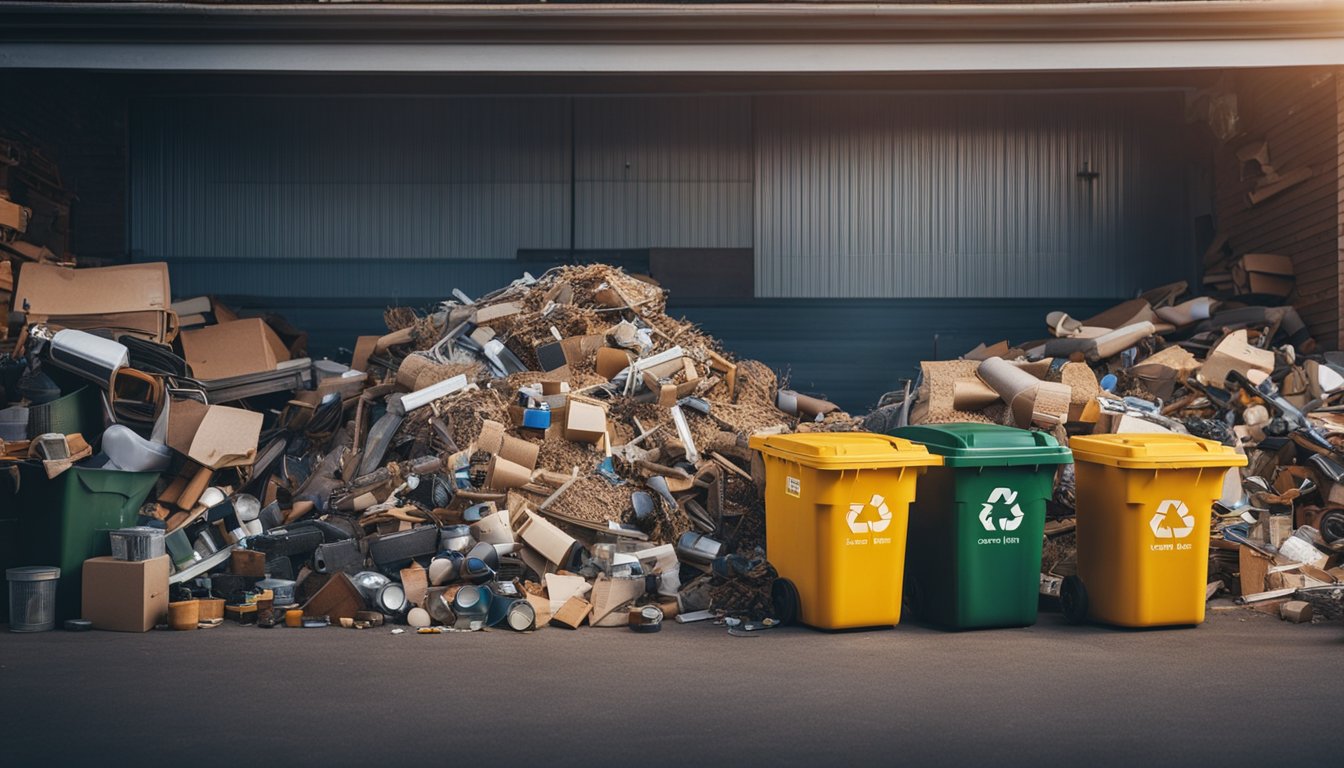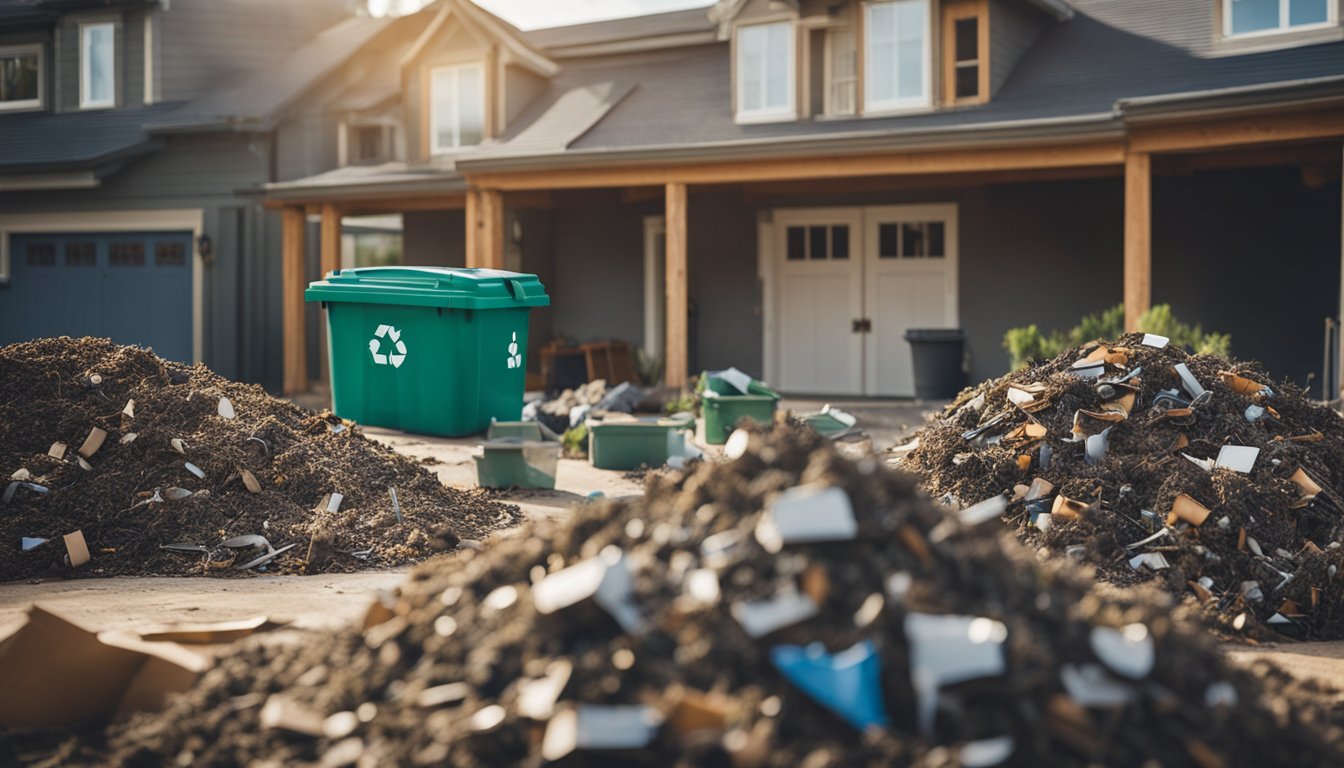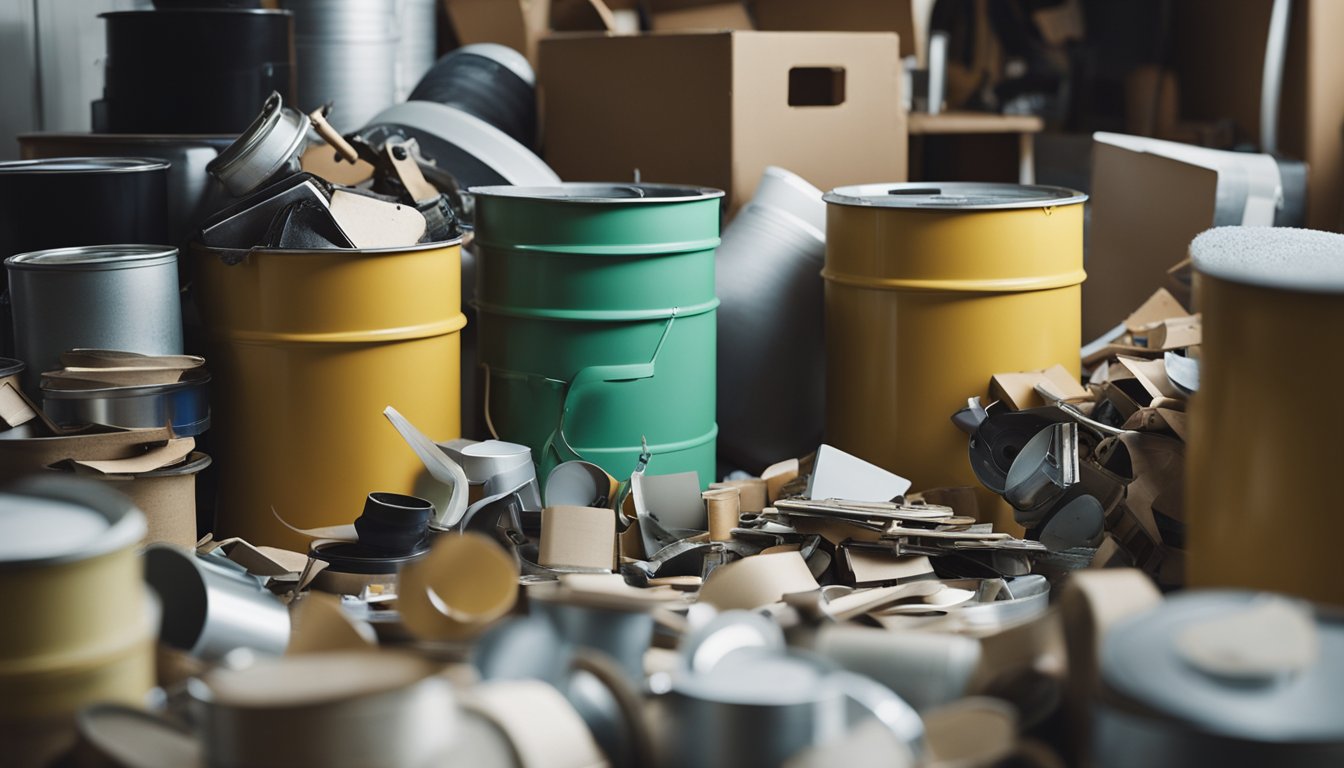Late updated: 25 Feb 2025 08:02
Written by: Daniel Harper
Creative Ideas For Minimising Home Renovation Waste: Sustainable Solutions
Embarking on a home renovation often brings excitement and anticipation, but it also poses challenges, particularly regarding the significant waste that can be generated. Minimising waste during a renovation not only conserves resources but also significantly reduces the environmental impact. As we become more aware of our ecological footprint, incorporating creative strategies to limit waste has become essential.

Proper planning and imaginative reuse of materials are fundamental to sustainable home renovation. We can reduce waste by reimagining existing materials and implementing innovative solutions. From repurposing old furniture to selecting eco-friendly materials, there are numerous ways to maintain a balance between functionality and sustainability.
As we explore these ideas, it's important to keep an open mind about the possibilities. By adopting these practices, we contribute positively to the environment while enhancing our living spaces. Let's delve into the creative solutions that can transform our renovation projects into models of sustainability.
Key Takeaways
- Effective planning is vital for waste reduction.
- Reuse and eco-friendly materials support sustainability.
- Creative strategies enhance renovation outcomes.
Planning Your Renovation for Waste Reduction
Effective planning is key to minimising waste in home renovations. It requires careful selection of materials, a focus on sustainable design, and an organised waste management strategy. This ensures not only a successful project outcome but also contributes positively to environmental sustainability.
Assessing and Procuring Materials
To start, we need to assess our renovation needs, focusing on the materials we will use. Selecting sustainable materials is vital. Opt for recycled materials or items that can be reused. Used or salvaged items can often be procured from local reclamation yards.
Additionally, choosing natural materials and eco-friendly options like efficient insulation not only reduces waste but enhances energy efficiency. It's also important to measure correctly and order just what we need to avoid excess.
Planning our purchases with a focus on these goals reduces the risk of overbuying and limits unnecessary waste.
Designing With Sustainability in Mind
Designing with sustainability involves more than just selecting eco-friendly materials. We should incorporate renewable energy elements, such as solar panels or green roofs, to reduce long-term environmental impact.
Our design choices need to embrace waste reduction strategies by incorporating modular and flexible designs. This enables easier future modifications without creating excessive waste. By prioritising designs that optimise for function and longevity, we contribute to sustainable renovation practices.
Minimising construction waste through thoughtful design not only benefits the environment but can also lead to cost savings.
Devising a Waste Management Plan
A structured waste management plan is essential to handle debris and other materials efficiently. Identifying ways to reuse and recycle is critical. We should separate waste into categories such as hazardous materials, recyclables, and general waste to ensure proper disposal.
Utilising a detailed plan helps limit landfill contributions significantly. Exploring partnerships with waste disposal services that commit to environmental sustainability can further support our efforts.
By integrating these eco-friendly practices, we foster a renovation process that respects both our resources and wider ecological systems. Our comprehensive approach to waste management is fundamental to achieving a sustainable renovation.
Implementing Waste-Minimising Strategies

Our focus here is on specific approaches to reduce waste during home renovations. We will explore hands-on practices, eco-conscious disposal methods, and off-site avenues for waste reduction, aiming to limit both environmental impact and resource use.
Practices for Reducing Waste on Site
Reducing waste begins by planning ahead. We can start by carefully measuring and ordering only the materials necessary. This helps minimise packaging waste and reduces leftover materials.
Another effective method is sourcing recyclable materials. Opting for environmentally friendly options like biodegradable packaging and minimal packaging can significantly cut down on waste.
Deconstruction instead of demolition saves resources by allowing us to salvage and repurpose materials. Fixtures or wood can be upcycled for new purposes, supporting waste reduction and creativity.
Eco-Friendly Disposal and Recycling
Proper waste segregation and disposal are crucial. Assign separate bins for recyclable, non-recyclable, and organic waste on-site. This ensures that materials like metal, glass, and plastic find their way to appropriate recycling facilities.
Partnering with initiatives like Habitat for Humanity for donating reusable goods is another eco-friendly approach. Unwanted items in good condition can be sold or donated to minimise waste.
Composting organic materials where possible further reduces landfill contributions. Recycling construction waste not only conserves resources but also aligns with sustainable practices.
Off-site Opportunities for Waste Reduction
Exploring off-site options can enhance our waste management efforts. Sell unwanted items online or through garage sales, giving them a second life while reducing waste.
Local swap meets can encourage community recycling and promote self-sufficiency. It's a great platform for sharing and receiving materials that would otherwise be discarded.
Participating in waste collection programmes can also make a significant impact. These programmes often accept materials for recycling that are not recyclable on-site, enabling us to be even more effective in waste management.
Frequently Asked Questions

As we explore creative ways to minimise home renovation waste, it's important to consider repurposing common household items and construction materials. Innovative projects and effective strategies can transform discarded materials into valuable, sellable upcycled products.
How can I repurpose common household items to reduce renovation waste?
Repurposing everyday items can significantly cut down on waste. For example, glass jars can serve as paint holders or storage containers. Old wooden furniture can be transformed into unique shelving or décor pieces. We can extend the life of materials by rethinking and innovating their use in home renovations.
What are some effective methods for repurposing construction materials?
Reusing bricks, wood, and metals in creative projects helps decrease waste. Leftover bricks can be used in garden pathways, while reclaimed wood might find a new life as flooring or wall panels. Metal scraps are ideal for small fixtures or artistic elements, showcasing the versatility of construction materials.
Can you suggest some innovative upcycling projects for discarded renovation materials?
Innovative upcycling projects might include creating feature walls from reclaimed wood or crafting furniture from old doors. We could also design light fixtures using metal piping or create garden structures with leftover stone. These projects not only reduce waste but also add character to our homes.
What strategies can be employed to minimise waste during home refurbishments?
Planning ahead is crucial. We should accurately estimate the materials needed to avoid excess, donate or sell unwanted items, and choose sustainable materials where possible. Encouraging suppliers to use minimal and recyclable packaging also helps minimise waste and supports eco-friendly practices.
In what ways can unwanted renovation debris be transformed into sellable upcycled products?
Unwanted debris might be turned into marketable products like rustic furniture, decorative objects, and garden accessories. By collaborating with local artisans, we can transform ceramic tiles into coasters, or weathered wood into picture frames. This creates a market for unique, eco-conscious décor items.
What are the five principles of waste reduction, and how can they be applied to home renovation projects?
The principles: Refuse, Reduce, Reuse, Repurpose, and Recycle. Refuse excess packaging and non-eco-friendly materials; reduce material use through precise planning; reuse items within the home; repurpose leftovers into new creations; recycle materials to ensure nothing goes to waste. By adhering to these guidelines, our renovations can be far more sustainable.
